Fallugia paradoxa, Apache Plume
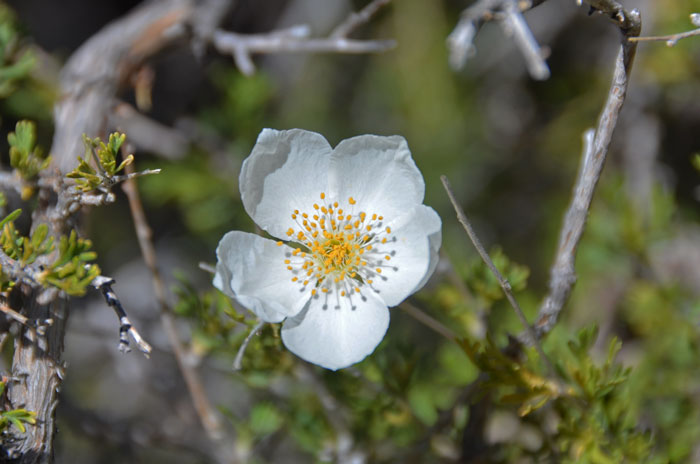
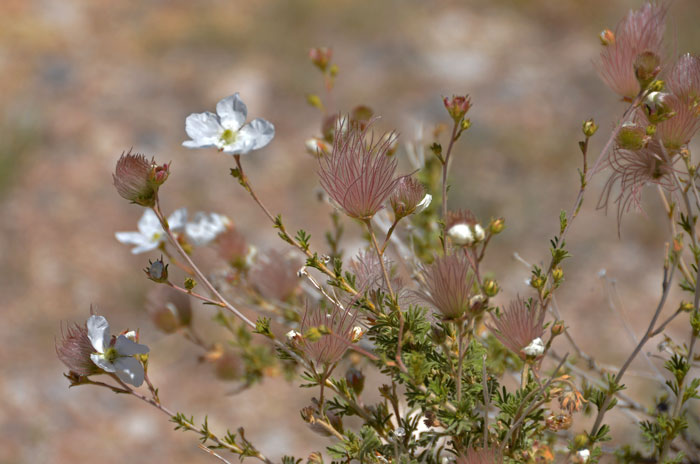
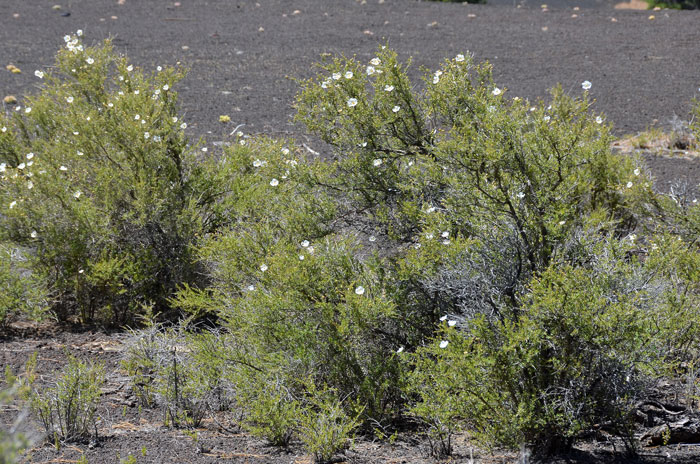
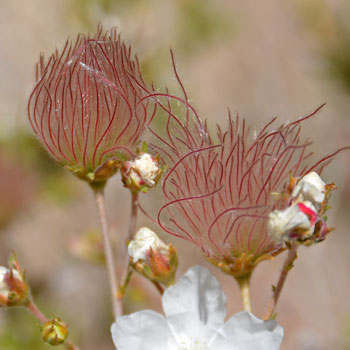
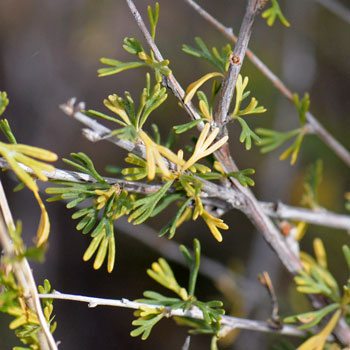
Scientific Name: Fallugia paradoxa
Common Name: Apache Plume
Also Called: Apacheplume (Spanish: Ponil)
Family: Rosaceae or Rose Family
Synonyms: (Fallugia micrantha)
Status: Native
Duration: Perennial
Size: Up to 6 or 8 feet, more or less.
Growth Form: Shrub; erect; scraggy or unkempt looking; slender multiple branches, bark grayish whitish-tomentose, bark peeling and shreddy.
Leaves: Green, dark green; hairy above (adaxial) silvery below (abaxial) deciduous or semi-evergreen; alternate to clustered, wedge-shaped or ovate; 3 to 7 lobes, linear and or deeply pinnate, leaves rolled under (revolute).
Flower Color: White; showy; flower inflorescence terminal or small clusters of 1 to 3; petals white; sepals alternate; stamens numerous, 1 style grows into a purplish plume at maturity; fruit, persistent; silvery puffs from several achenes with elongated silky plumose-like styles.
Flowering Season: April to October; May to June in California; May to December in Texas.
Elevation: 3,500 to 8,000 feet in Arizona and Texas; 3,000 to 7,000 feet in California.
Habitat Preferences: Dry rocky slopes, open woods, canyon bottoms, often in chaparral, pinyon-juniper and pine communities, often in rich moist soil but tolerates most western alkaline soils in preferred habits.
Recorded Range: Fallugia paradoxa is found throughout the southwest United States in AZ, CA, CO, NM, NV, OK, TX and UT. It is also native to Baja California and northern Mexico. In Arizona it is found mostly in the north, south and southeast parts of the state with few or no records in Apache, Yuma, LaPaz, Pinal, Gila and Santa Cruz counties.
North America & US County Distribution Map for Fallugia paradoxa.
U.S. Weed Information: No information available.
Invasive/Noxious Weed Information: No information available.
Wetland Indicator: No information available.
Threatened/Endangered Information: No information available.
In Arizona, California, New Mexico, Nevada, Texas and Utah there is 1 species of Fallugia paradoxa. All data is approximate and subject to taxonomic changes.
Comments: Fallugia paradoxa may be found in the Sonoran, Mojave and Chihuahuan deserts in preferred habitats. This species provides fairly good browse for cattle and sheep and of value for erosion control as a soil binder. Apache Plume branches and branchlets provide good protection for birds and small mammals.
For a comprehensive thoroughly documented review of Fallugia paradoxa see the USDA USFS Fire Effects Information System, or FEIS.
Fallugia paradoxa looks similar to Cliff Purshia stansburiana.
Fallugia paradoxa has been used for making brushes and brooms, stems for making arrows and several other purposes by western North American indigenous peoples.
Havasupai Fiber, Basketry, Used for the top ring of baskets.
Hopi Other, Hunting & Fishing Item, Stems used for arrows.
Hualapai Fiber, Furniture, Branches used to make cradleboard hoods and beds.
Keres, Western Fiber, Brushes & Brooms, Brush used for rough brooms, especially in Acoma.
Navajo, Kayenta Drug, Witchcraft Medicine, Plant used as witchcraft to cause insanity.
Tewa Fiber, Brushes & Brooms, Slender branches bound together and used as brooms for rough outdoor sweeping.
See ethno-botanical uses at Native American Ethnobotany, University of Michigan, Dearborn.

